_Photo_Rachel_Malehorn_127.jpg?resize=1290&crop=1290x699,0x85)
Ballet 101: The Five Basic Ballet Positions
Ballet is a beautiful (and complex!) artform, but even the most advanced moves on stage and in the studio stem from the five basic ballet positions for feet and for arms. Whether a student or audience member, if you know these core movements, you're well on your way to understanding the basics of ballet.
Students in Milwaukee Ballet School & Academy (MBSA) learn these positions from an early age, honing them and building on them throughout their training. Our faculty and Company Artists would all agree that mastering these movements is one of the most important parts of a young dancer's education!
We've broken down the basic stances and positions below so you can confidently identify the five basic ballet positions today.
Table of Contents:
2. Best Foot Forward: Basic Ballet Feet Positions
3. Up in Arms: Basic Ballet Arm Positions
Meet Us at the Barre
Most ballet dancers will start their class or rehearsal at the barre, a stationary and supportive handrail used for balance and stability in dance. A barre can sometimes be connected to a wall or can be portable depending on the facilities and the dancer’s needs.
Most of the time, a barre should rise to the waist level of a dancer, so some barres may have two parallel layers to accommodate dancers of differing heights. While you don’t see barres in performances, they are incredibly important for strength training and warm-up exercises, typically referred to as barre work.

MBSA Pre-Professional Students. Photo Rachel Malehorn
Barre work is seen in a lot of warm-ups to increase strength, flexibility, balance, and posture, but some of the actual first footwork techniques stem from foot positions. While different schools of ballet may vary, you will most commonly see five basic ballet positions defined as standard placements when feet are on the floor. These positions help a dancer build the proper muscle groups for more advanced techniques and condition them to work towards performing the choreography of classical ballet.
It is important to note that each of these positions requires turnout: a rotation of the legs at the hips that causes the feet and knees to turn outwards, away from the front of the body. This rotation allows for greater leg extensions and the graceful lines seen in many iconic ballet movements.
Best Foot Forward: Basic Ballet Feet Positions
First Position
In this position, the heels of both feet are together and touching with toes facing outwards, as pictured below.
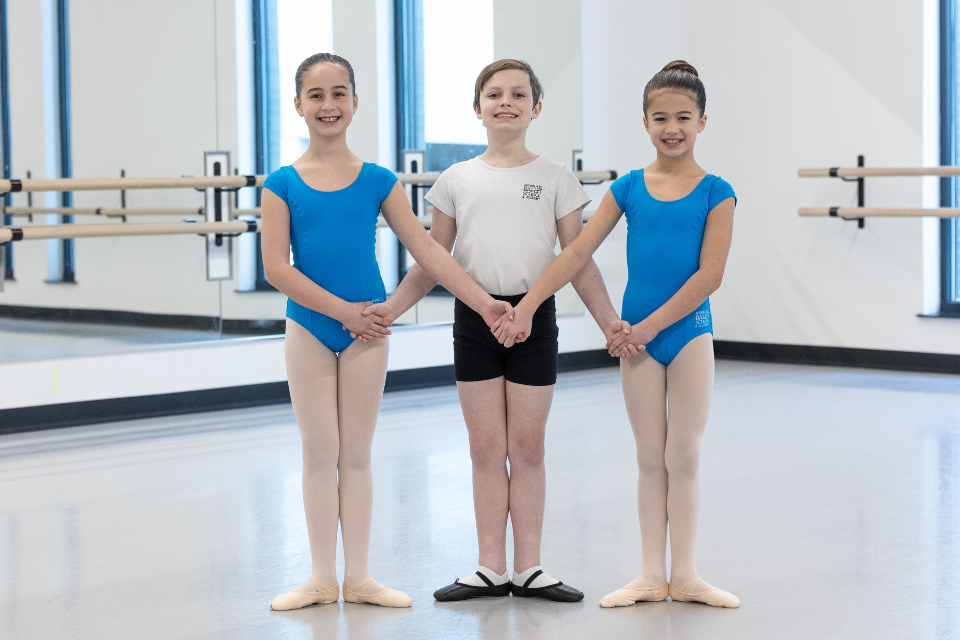
MBSA Beginning Division Students. Photo Rachel Malehorn.
It is important to note that through conditioning, a first position can develop into a complete turnout, which is a 180-degree angle in which feet point exactly opposite one another to create one complete line.
Second Position
Similar to the First Position, Second Position involves pointing feet in opposite directions, but now with approximately 12 inches of space between the heels of the feet. Many recommend keeping this gap between the heels approximately hip-distance or shoulder-distance so that heels are not too close or too far away from one another. Below, students hold second position en pointe.
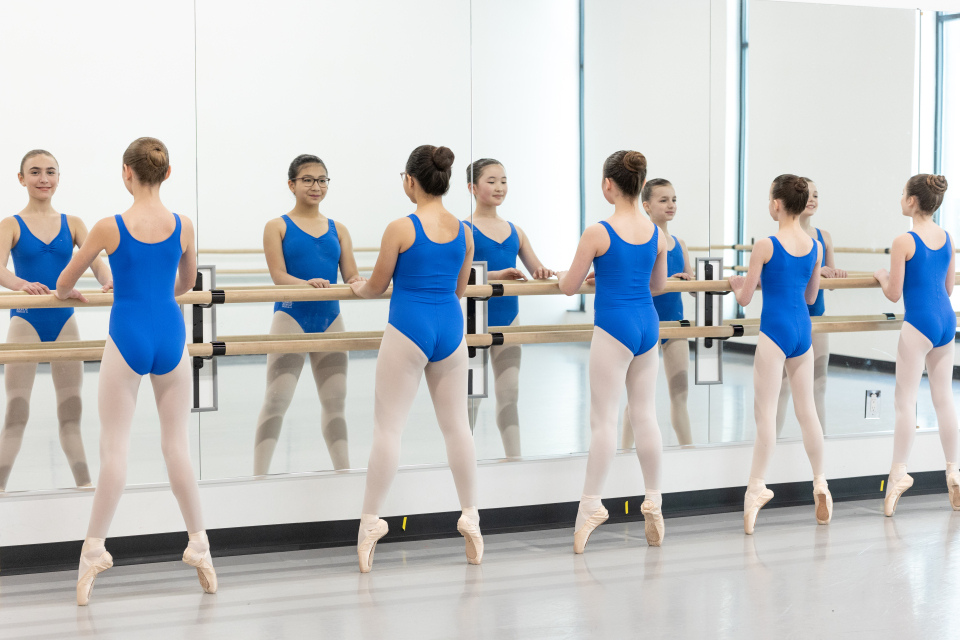
MBSA Intermediate Division Students. Photo Rachel Malehorn.
Third Position
Third position is a crucial stepping stone for achieving a well-executed Fifth Position and is regularly used in earlier education. Third Position requires a dancer to place one foot in front of the other without a gap in the turnout position. The heel of the front foot should sit right at the arch of the rear foot with knees turned outwards. This position helps dancers establish good technique, placement, and control for other positions.
Fourth Position
There are two unique ways to practice Fourth Position: ouverte and croise. Both variations start with the same foot placement of Third Position, with one foot in front of the other while turned out. Then, similar to the difference between First and Second position, the dancer will place approximately 12 inches of space between the feet while keeping feet and knees turned out.
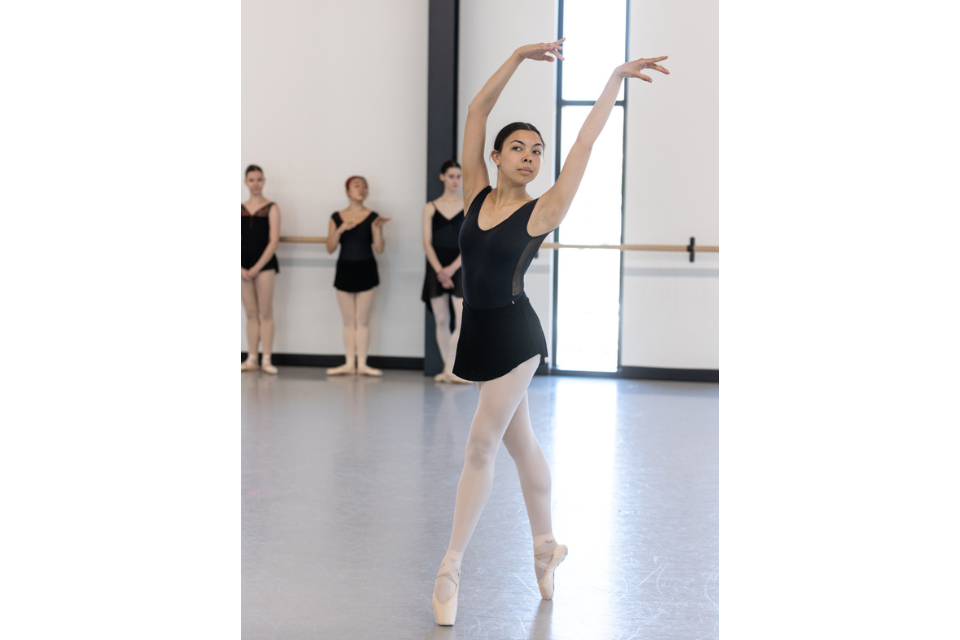
Summer Intensive Student. Photo Rachel Malehorn.
Ouverte (French for ‘open’) Fourth Position involves lining up the heels, one directly in front of the other. Croise (French for ‘cross’) Fourth Position involves lining up the heel of each foot with the toes of the other while keeping knees and feet turned out, creating an overlapped position (pictured above en pointe).
Fifth Position
Among the five feet positions, the fifth position is the most advanced, taking years of experience to reach full mastery due to the demanding hip and foot rotation. Fifth Position often is derived from Fourth Position, as two spaced feet become parallel lines pointed in opposite directions. Here, the heel of the front foot is in contact with the big toe of the back foot when positioned parallel.
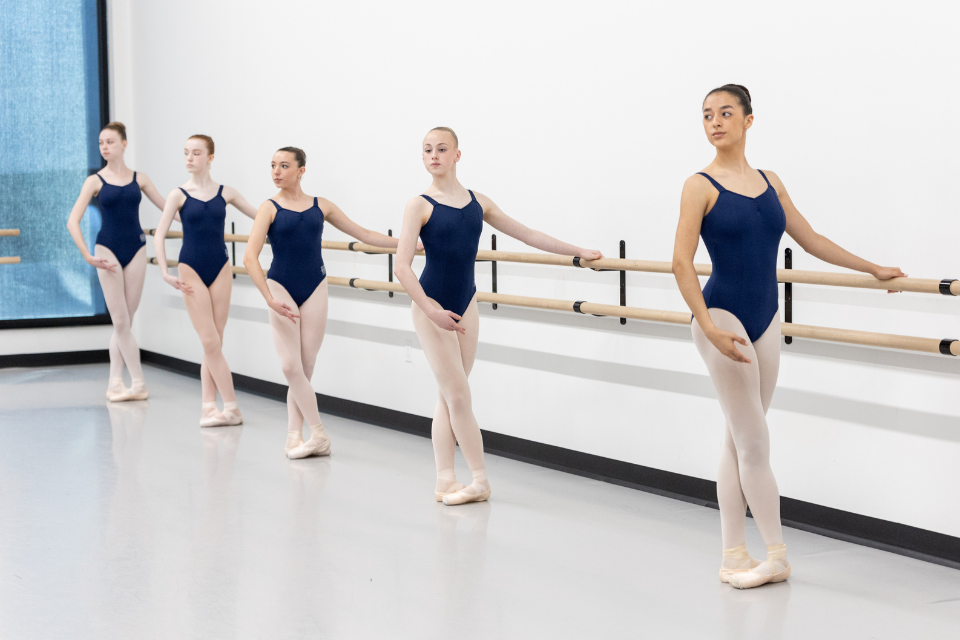
MBSA Academy Division Students. Photo Rachel Malehorn.
Up In Arms: Basic Ballet Arm Positions
The footwork is just the first half of basic ballet positioning, with the upper body arm extensions being just as important. Like footwork, there are five basic positions for arms, with some variation between regional ballet companies.
To get into each of these techniques, there is usually a preparatory pose, often called en bas, in which a dancer stands straight with their arms forming a slightly circular shape at the hips. Most positions will start and end at en bas, so you can consider it a baseline for the following positions.
First Position
First Position is the easiest of the arm positions, especially coming from en bas, as it asks a dancer to raise their hands in the same circular shape until they are at their waist. A dancer’s palms should face against their torso and their elbows should point to each side. This position offers nice support and allows the shoulders to remain relaxed. Many visualize this position as aligning the tips of the fingers to the same height as the navel.
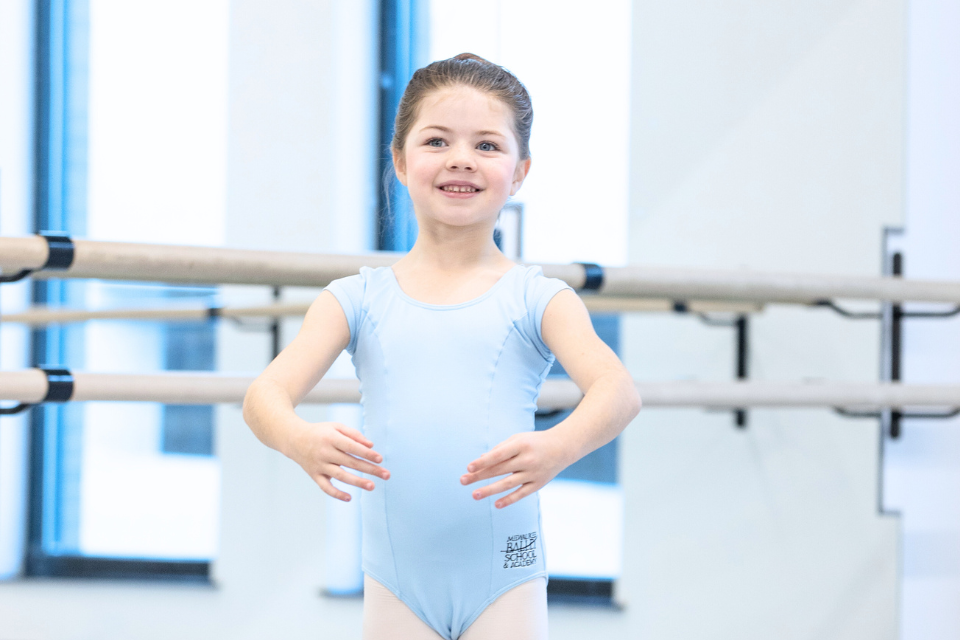
MBSA Children's Division Student. Photo Rachel Malehorn.
Second Position
In Second Position, it is often easiest to visualize the movement after starting in the preparatory position. A dancer raises their arms from en bas and extends them to each of their corresponding sides. For the best posture, a dancer should ensure that their arms are not fully horizontal but rather have a natural and relaxed slope down from the shoulders with their palms turned forward.

MBSA Boys Class Student. Photo Rachel Malehorn.
Third Position
Similar to the foot position, the third arm position is a combination of the first and second positions, with one arm in each. This position can be done with either arm in first or second position and typically acts as a transitional position, often used before moving to fourth or fifth position.
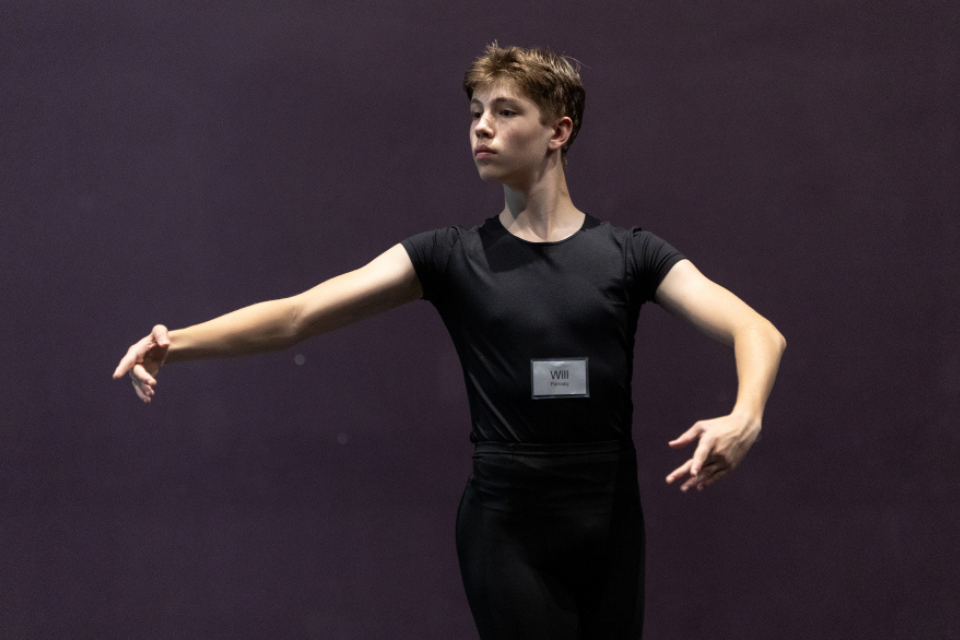
Summer Intensive Student. Photo Rachel Malehorn.
Fourth Position
To best describe Fourth Position, many recommend starting in Third Position rather than en bas. From Third Position, a dancer will raise one arm over their head while maintaining a first position with the other. This position frequently puts tension on the arm of a dancer, strengthening it accordingly.
Fifth Position
To continue from the Fourth Position, the Fifth Position requires a dancer to raise both arms above their head in an arch, keeping the same distance between the arms. Arguably, this position offers the biggest challenge to newer dancers because of the core strength required to keep both arms elevated for the quantity of time needed.
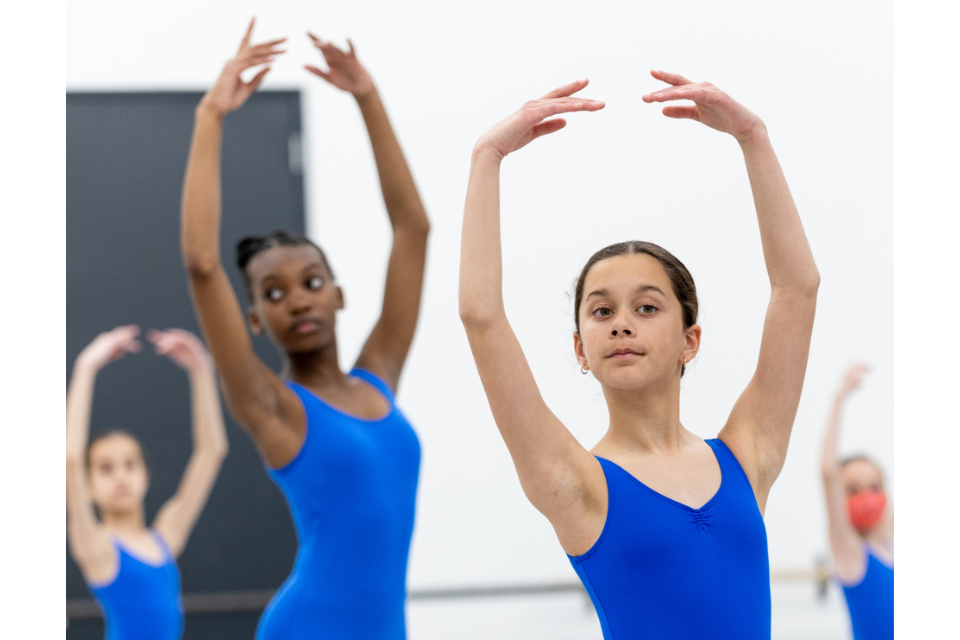
MBSA Intermediate Level Students. Photo Rachel Malehorn.
For young dancers, learning these positions is key to building the strength and posture needed for more advanced moves. While jumping straight into the showstopping leaps and pirouettes might sound like more fun, improper moves can result in sprains, fractures, and tears that can injure a dancer and potentially halt their progression during recovery periods.
Educators at Milwaukee Ballet School & Academy understand the importance of learning ballet through building fundamental skills that progress into the iconic moments ballet is famous for. With classes for ages 2 through adult, it's never too late to learn to dance! More information can be found here.
We hope you enjoy your new knowledge of the five basic ballet positions for feet and arms and can walk into your next class or theater experieince with confidence!
